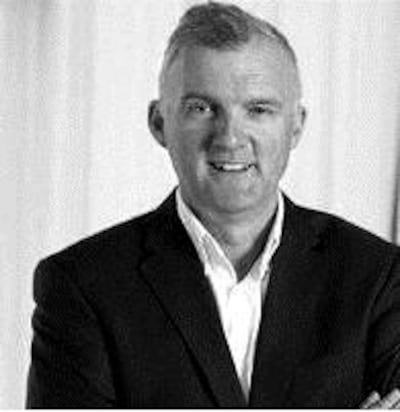While more people have undoubtedly become aware of the scale and immediacy of the climate crisis in recent times, translating that awareness into effective and sustained action at governmental level has remained problematic.
The hope must be that the publication of the UN’s report on climate change last week will act as a game-changer in this respect and empower the leaders around the world – including Ireland – to step up to the plate.
The reality is that it has to.
UN secretary general António Guterres did not hold back when he described the Intergovernmental Panel on Climate Change (IPCC) report as a “code red” for humanity which “must sound a death knell for coal and fossil fuels before they destroy our planet”.

Whether it’s rising sea levels, the recent heatwaves and wildfires in Turkey, Greece and California or flooding in Germany and Belgium, it’s clear that the climate crisis remains the greatest existential challenge of our times. As the IPCC report demonstrates, we have an ever-shrinking window of opportunity to limit global temperature increase to 1.5 degrees. Transitioning away from fossil fuels will be key to achieving this target.
Emissions
Given this necessary focus on reducing emissions, it's perhaps understandable that some of the other benefits of renewable energy are generally less well appreciated. Both wind and solar farms, for example, require no fuel to run and, once built, generate electricity at very low cost – savings which can and should be passed on to consumers.
Ireland's renewable energy sector is beginning to thrive like never before. But for all this progress, significant challenges remain
The development of renewable energy infrastructure in other countries has already pointed the way. Continuous advances in technology – and falling technology costs – means that, around the world, electricity generated from renewable sources is increasingly cheaper than that derived from fossil fuels.
Wind energy’s capacity to reduce the wholesale price of electricity has already been confirmed by the ESRI, the Commission for Regulation of Utilities (CRU) and a host of other analysts. A recent report from energy specialists, Baringa, found that cutting carbon emissions from the electricity sector could save Irish consumers €180 million.
The potential for savings is clear when we consider that Ireland’s significant offshore wind potential has long gone untapped when compared with that in the UK and other European countries. A number of projects are now in advanced stages of planning on both coasts, including Codling Wind Park off the coast of Wicklow.
Added to this, the first round of auctions under the Renewable Electricity Support Scheme, held last year, have led to a slew of successful solar and onshore wind farms entering construction around the State.
Capacity
In short, Ireland's renewable energy sector is beginning to thrive like never before. But for all this progress, significant challenges remain. Foremost among them will be harnessing the increased capacity generated by Ireland's new wind and solar farms and ensuring this can be added to the capacity of the national grid.
There is currently a disconnect between the magnitude of the Government’s ambition and the existing transmission network’s capacity for variable renewable electricity.
Put simply, the current grid is not fit for purpose. It is not ready to take on board the volumes of renewable power required to meet and exceed the country’s 2030 climate ambition.
It also remains the case that a lack of transmission infrastructure in parts of the State – particularly the west and northwest – means that, without an overhaul, we may struggle to get electricity from where it is generated to where it is most in demand.
Clearly, more will need to be done to ensure Ireland’s grid can accommodate the low-carbon electricity needed to fight climate change and power all our homes and businesses.
A future-proofed grid system must be able to accommodate both ever-larger volumes of renewable electricity and its variable nature
A recent public consultation by EirGrid on the future of Ireland’s grid system – Shaping Our Electricity Future – is an important step in this regard.
Four approaches
This outlined four possible approaches to redeveloping the national grid and meeting Ireland’s 2030 target, namely:
– generation-led, with Government policy influencing where renewable energy is generated and favouring locations where there is already strong grid infrastructure
– developer-led, where new sources of renewable electricity continue to be connected as requested in any location.
– technology-led, using technical solutions to make the grid more resilient so that it can better handle the variable nature of renewable energy.
– demand-led, where Government policy determines where large energy users locate in Ireland.
However, what will ultimately be needed is a combined approach – with elements from all four scenarios used to build a strong, reliable and flexible electricity transmission grid that can handle the requirements of a future powered by clean energy.
This will need to be robust enough to manage not just the target of 70 per cent of electricity from renewable sources by 2030, but also the planned 8.2 GW of onshore and 5 GW of offshore wind envisioned under the Climate Action Plan by 2030. As we continue to move away from fossil fuels and embrace low-carbon energy, a future-proofed grid system must be able to accommodate both ever-larger volumes of renewable electricity and its variable nature.
The signs of the climate crisis and ecological breakdown are, sadly, all around us. Taking the challenge seriously and tackling it with the same urgency as the Covid-19 pandemic, means not just meeting our 2030 targets, but striving for a zero-carbon future where clean energy powers all of our lives.
Ireland is on the right track but, as the IPCC report made clear, time is short, and the necessary foundations must urgently be put in place if this is to become a reality.












